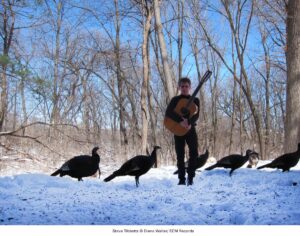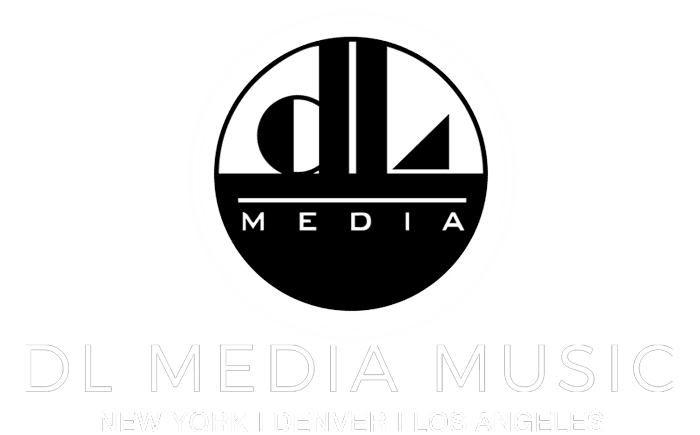PRESS RELEASES
Steve Tibbetts | “Hellbound Train” | ECM

Guitarist Steve Tibbetts Draws From 40 Years of His Recordings on ECM with His Double-Album Retrospective, Hellbound Train
Available July 1 via ECM Records

A few questions for Steve Tibbetts
Hellbound Train is a double album anthology drawn from your work on ECM. What was the criteria for inclusion? How did you select the pieces? Is this The Best Of Steve Tibbetts?
It’s not exactly a “Best of.” It’s “The Best Steve Could Do.” That’s meant in the most positive sense. I made samples of the first and last 10 seconds of my compositions, mapped them out across the keys of three keyboards, and made labels with post-it notes and stickers. Songs I thought would work together seamlessly didn’t. What would fit together? I played the ending of every song with the beginning of every other song until a plot started to reveal itself. Some of the compositions just don’t work well outside of the album they live in. My album Yr is its own thing. The same is true for most of Natural Causes and Life Of. Those compositions don’t prosper well outside of their own habitat.
Artists can put images or music together, and think, “Well, that’s pretty good. That works.” But the next day when you flip on the lights it’s often clear that you’ve been performing experimental art taxidermy. The artist has to be able to listen for that little bell, the sound a friend of mine calls “the ring of truth.” The artist has to be aware when the little bell is silent.
Hellbound Train came together easily; the edges welded themselves. The sequencing makes sense, has the ring of truth, furthers the narrative, and fulfills similar inscrutable aesthetics.
In terms of representation, there is a lot more music from Big Map Idea, The Fall of Us All and A Man About A Horse than from either earlier or later albums. The collection hones in on middle-period Tibbetts. Can you say something about your musical/artistic development in this time? It seems to roughly coincide with the period when you were traveling for the Naropa Institute.
Working jobs in new cultures meant I needed a mind receptive to other ways of thinking. Money is a challenging, highly loaded subject in any culture. I had to hire people in Asia and I made some clumsy mistakes; Minnesota rules didn’t translate. Being aware of the possibility of black magic isn’t an everyday concern when hiring contract labor in St. Paul, but Wayne Vitale told our group that in Indonesia it was something to be aware of.
A side effect is that a kneaded, rubbery mind can set the stage for new ways of thinking about music. I didn’t have to try; my mind was already malleable from having to work with visas, transportation, government officials, food, proper attire and comporting oneself with some measure of dignity. New ways of absorbing music and sound just snuck in.
You are known as an inventive guitar player, trying new tunings and techniques to achieve previously unknown chords, shapes and sounds. How do you develop what works for you and your pieces, or are the pieces themselves sometimes a result of new tunings and chordal/modal discoveries?
About 20 years ago I settled on the tuning I use for electric and acoustic guitar, dropping the A string down to a G and the low E string down to a C. On acoustic and electric 12-string I use that same tuning, but with everything dropped another whole note. That gives me a nice drone on the low strings. It also means everything tends to be in the same key, but that doesn’t concern me so much. A lot of the world’s music stays in the same key.
Do the electric compositions work acoustically and vice versa? Have you experimented with this?
The electric guitar and amp I’ve been using since 1984 have an antagonistic electronic relationship that depends on electricity. If I turn the guitar towards the amp, the amp starts to overload and make a frightening ripping sound, like sheet metal being torn to pieces. Electronic storms like that don’t live in acoustic guitars.
The acoustic 12-string has its own world. It’s built a small concert hall inside itself from 50 years of playing. When the wood is warmed up there’s a resonance, an extra voice that I’ve never found in other guitars.
What’s the origin of your interest in drones?
“Tomorrow Never Knows.” When Revolver was released faithful Beatle students played the album incessantly. None of us knew what that sound was that opened up that song, but we knew it was the right thing. When I worked in Nepal and Bali I got used to living in the daily world of Tibetan ritual drones and the cyclical steady-state world of Balinese Gong Kebyar, which is drone-like in its own way. Drones and gong cycles were something new to settle into when I was far away from my studio and music making.
Being away from your own music for a few months every year can give your mind a much-needed blank canvas, for better or worse. Your open mind will soak in the drones and cycles. The blank mind-canvas can host sounds you’d rather not be humming all day as well. I lived next to a monastery in Boudhanath that started morning rituals at 4AM, longhorns blasting the first three notes of “Three Blind Mice.” In Ubud I lived by a rooster that crowed Morricone’s theme to The Good, the Bad, and the Ugly at sunrise.
Of your musical associates, we know meanwhile something about Marc Anderson, much less about the other contributors. Could you say a few words about some of them and what they’ve brought to the music. And what kind of vase does Tim Weinhold play?
Michelle Kinney can bow her cello so it melts into the music. She can coax harmonics out of the cello that make it appear and disappear with the 12-string. It’s there and not there. I don’t know anyone else who can do that.
Marcus Wise is my friend and compadre. When I thought I’d take a stab at learning to play tabla in the ’70s I sought him out and studied for a few months. Years later Marcus called me at my studio and suggested that I go to what would be one of the most important concerts of my life.
Marcus told me I must not miss a concert by the tabla virtuosos Alla Rakha and his son Zakir Hussain. I was impressed with the father-son tabla pyrotechnics, but what truly seemed to reorder my mind was the playing of the great sarangi player Sultan Khan. Sultan Khan sat on the stage and gazed abstractly around the auditorium while drawing deep, almost voice-like sonorities from his instrument. In his hands the sarangi seemed nearly hallucinogenic in its ability to evoke landscape and emotion in the field of consciousness. I felt like I was watching a tableau of the sun rising over the Ganges superimposed on the auditorium’s stage. I listened to a cassette of the concert over and over. It began to warp my musical brain. It seemed that there was a way to say more by doing less.
Tim Weinhold plays a vase his wife bought to put flowers in. Tim being Tim, he played it before it saw any flowers.
The musicians I work with are people I trust and know almost exclusively through Marc. He’s the musician in town who knows everyone, and who knows who will be right for what I’m working on.
The anthology also marks 40 years of recording for ECM. What’s next in your musical journey?
Right now I’m working on a project with Marc and others. It’s emerging as big, sad, strange, planet-colliding music. Marc is hitting his drums pretty hard, and I’m enjoying the firefight between the Stratocaster and Marshall. The 12-string is happy and resonant. It all sounds good, and the better it sounds, the slower we work.
When that project is finished, I’ll move my studio from the building I’ve been in for 36 years to my home. With my children gone I can move a few instruments into the girls’ childhood room and settle into some time with 12-string and piano. I’ll spend time looking out the windows. We live on the edge of a small forest. Visitors include coyotes, turkeys, deer, possums, raccoons and lots of birds.

Steve Tibbetts | Hellbound Train
ECM Release Date: July 1, 2022
For more information on ECM, please visit:
For media inquiries, please contact:
DL Media · 480-272-2991
Candelaria Alvarado · candelaria@dlmediamusic.com
Don Lucoff · don@dlmediamusic.com
For the Preferred Artist
Information and press materials (including album covers, promotional photos
and bios) on all DL Media artists can be found at our website: dlmediamusic.com
###
